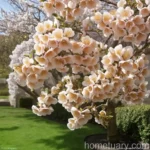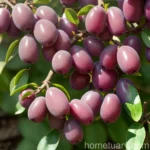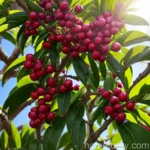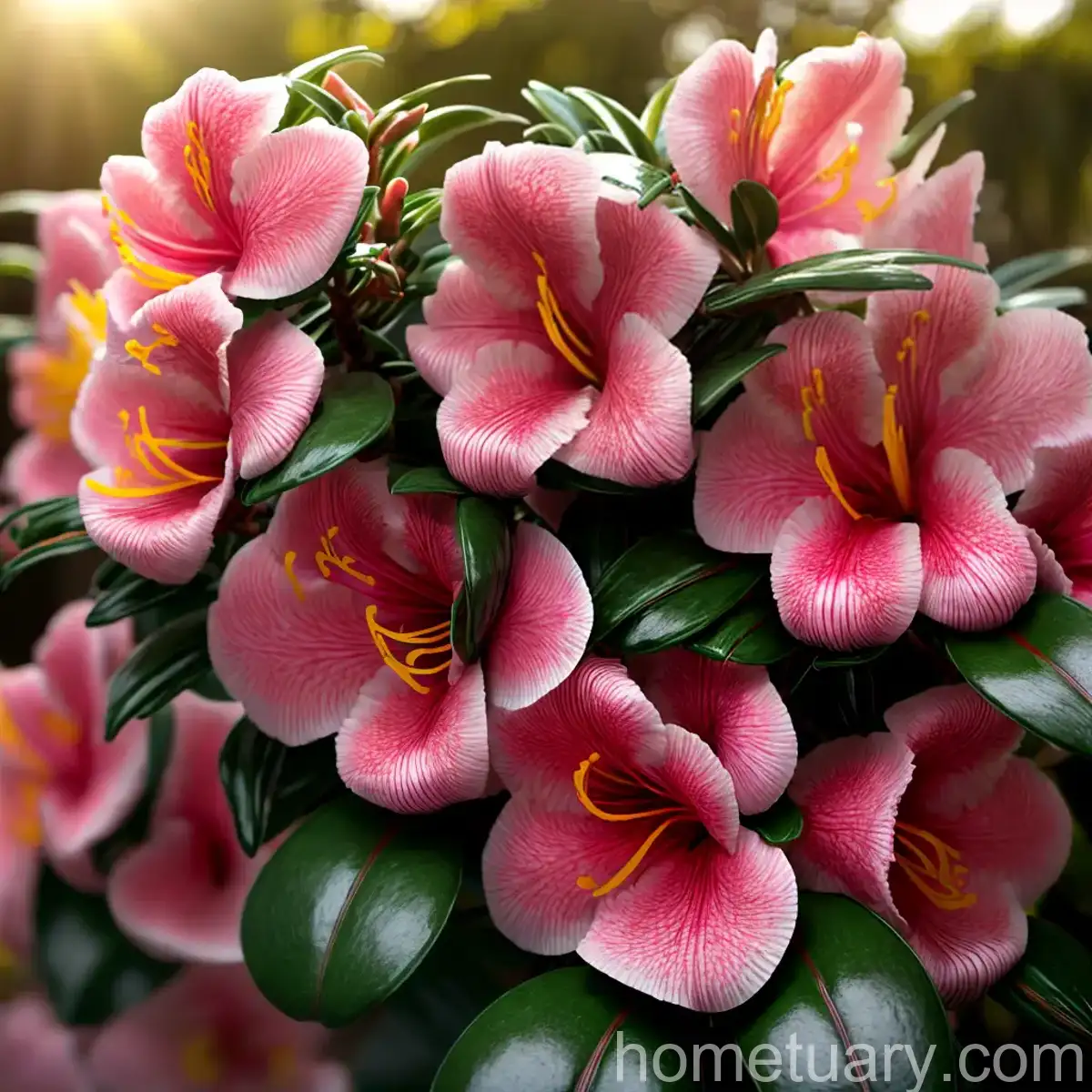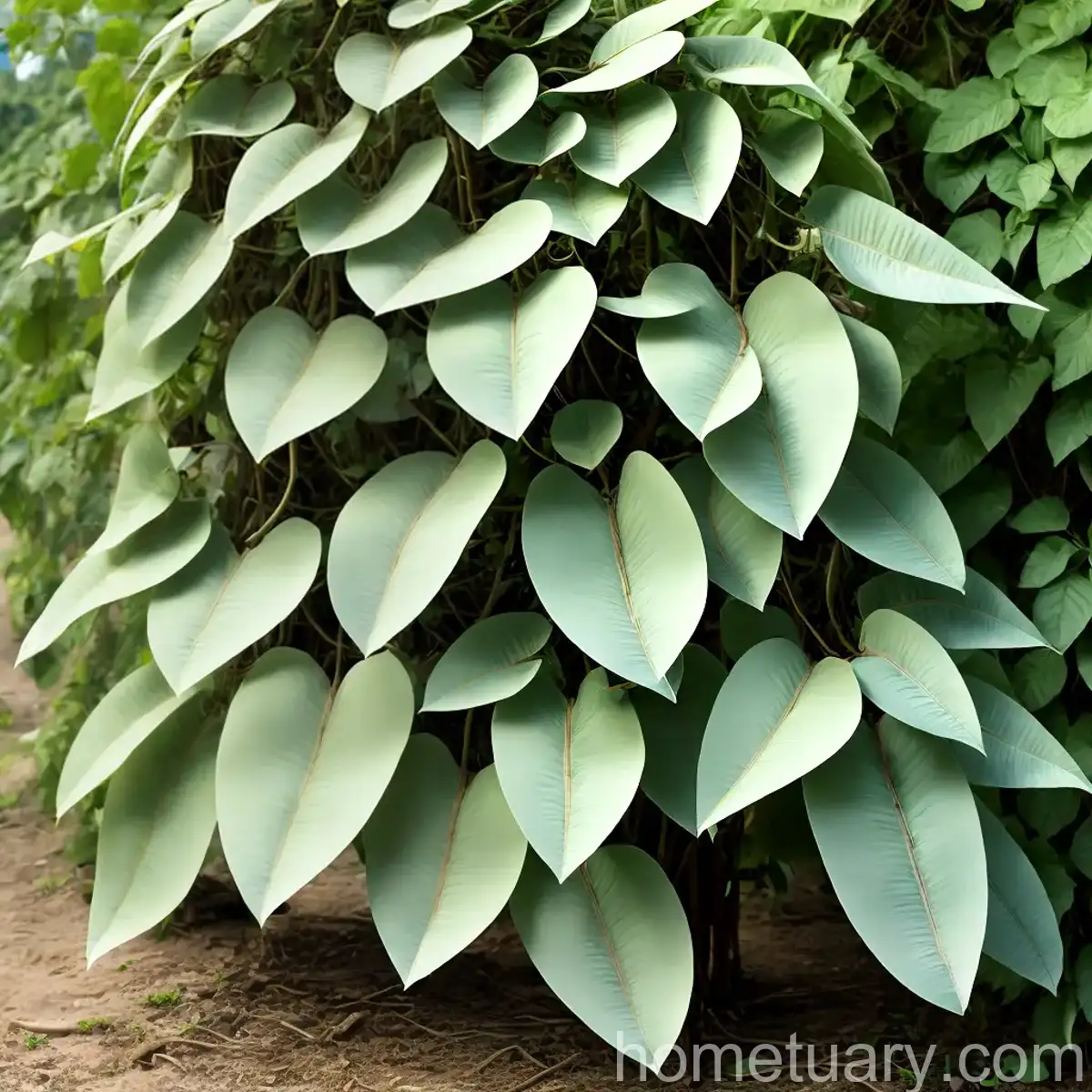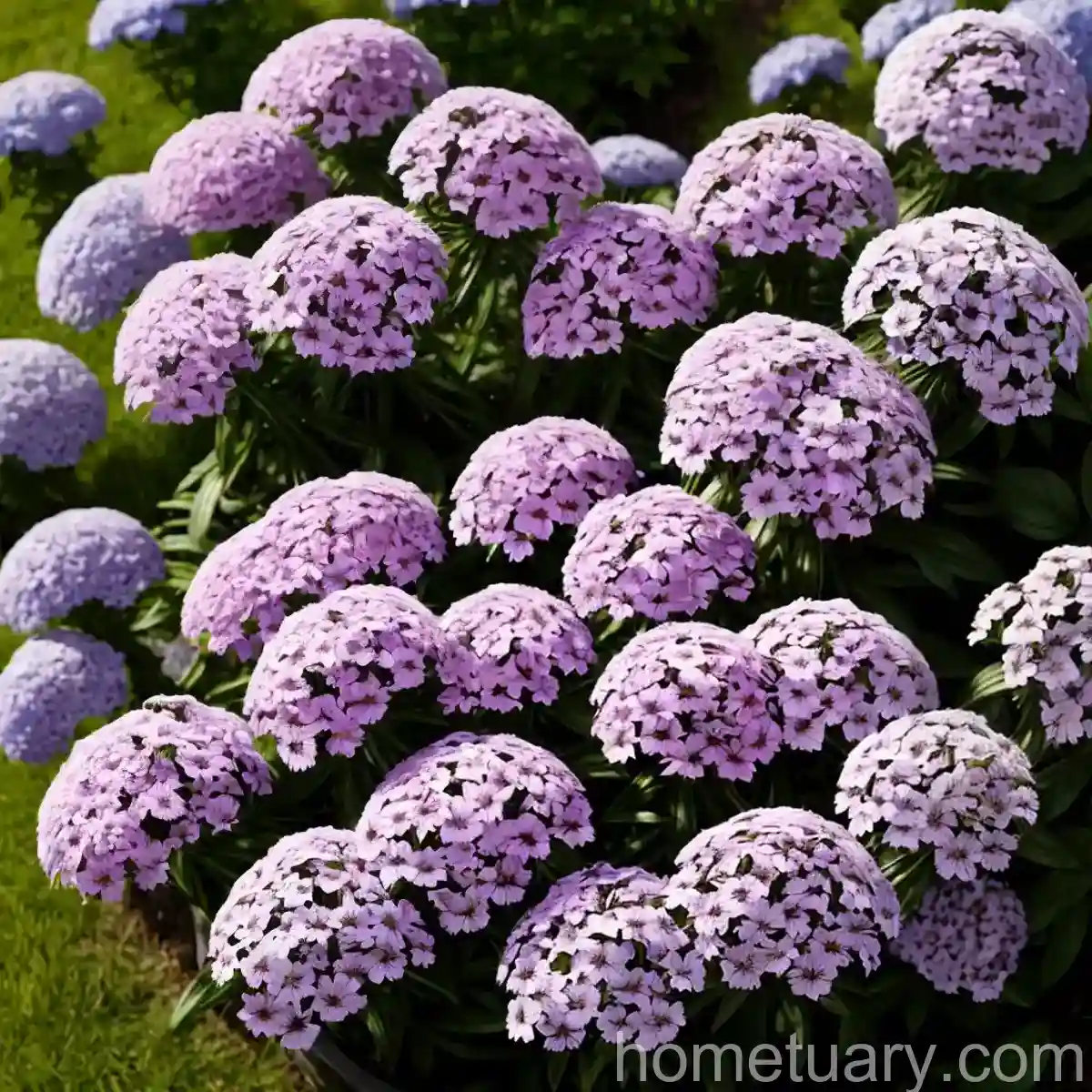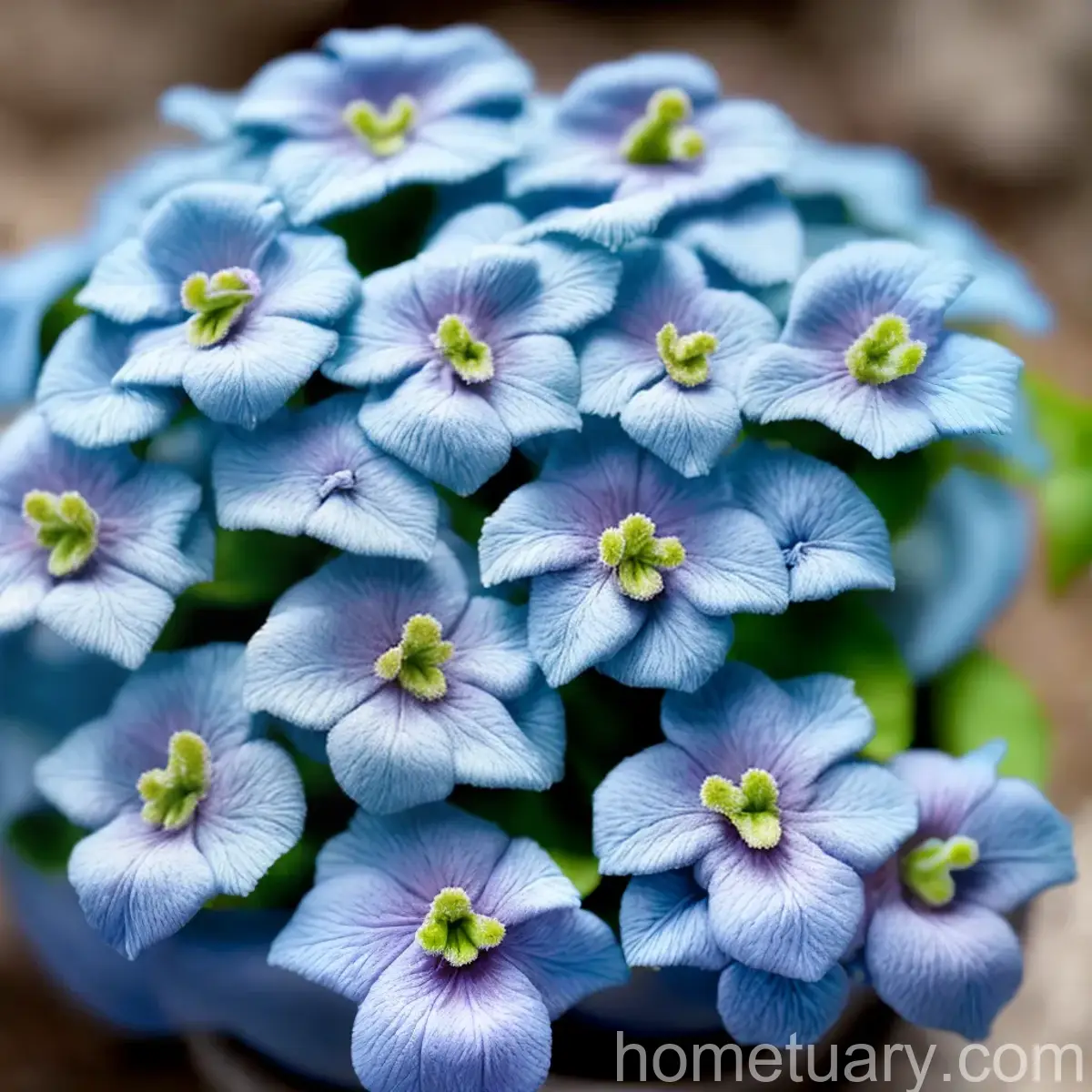Cherry Laurel (Prunus laurocerasus ‘Otto Luyken’) – A Comprehensive Guide
Cherry Laurel, scientifically known as Prunus laurocerasus, is a widely admired evergreen shrub that belongs to the Rosaceae family. The ‘Otto Luyken’ variety is specifically cherished for its compact growth and lush, dark green foliage. In this extensive guide, we will delve into the intricacies of cultivating and caring for this splendid plant.
What is Cherry Laurel (Prunus laurocerasus ‘Otto Luyken’)?
Cherry Laurel, also known as English Laurel, is a remarkably versatile plant that features densely packed, glossy leaves and an attractive, bushy appearance. The ‘Otto Luyken’ cultivar is renowned for its compact growth habit, making it a popular choice for hedges, borders, or even as a stand-alone specimen in the landscape. This evergreen shrub is native to regions of Asia and Southern Europe, where it thrives in a variety of landscapes and climates.
Key Takeaways – Cherry Laurel (Prunus laurocerasus ‘Otto Luyken’)
Before diving into the specifics of cherry laurel care and cultivation, let’s explore the key characteristics and attributes associated with this captivating plant.
- Common Names: Cherry Laurel, English Laurel, Otto Luyken Cherry Laurel
- Scientific Name: Prunus laurocerasus ‘Otto Luyken’
- Growth Habit: Evergreen shrub
- Noteworthy Features: Compact growth, dark green foliage
- Utility: Ideal for hedges, borders, and landscaping applications
Now that we’ve established a brief introduction to cherry laurel, it’s time to unravel the nuances of its culture, uses, and maintenance requirements.
Culture
Cultivating cherry laurel successfully involves paying attention to several crucial factors, including water, sunlight, soil, and fertilization. Let’s explore each of these elements in detail.
Water
Cherry laurel typically thrives in well-draining soil and moderate watering. It’s essential to ensure that the plant receives adequate moisture, especially during its initial establishment phase. However, it’s equally important to avoid waterlogged conditions that can lead to root rot. Once established, cherry laurel can exhibit a degree of drought tolerance, making it a resilient addition to various landscapes.
Sunlight
As an evergreen shrub, cherry laurel thrives in full to partial sunlight. While it can tolerate some shade, it tends to exhibit optimal growth and dense foliage when provided with ample sunlight. When selecting a planting location for cherry laurel, consider a spot that receives at least 6 hours of direct sunlight per day for the best results.
Soil
This plant is adaptable to various soil types, but it thrives in moist, well-drained soil with a slightly acidic to neutral pH. The soil should be rich in organic matter and capable of retaining moisture without becoming waterlogged. Before planting cherry laurel, it’s beneficial to amend the soil with organic compost to promote healthy root development and overall vitality.
Fertilizer
When it comes to fertilizing cherry laurel, a balanced, slow-release fertilizer formulated for acid-loving plants is ideal. Apply the fertilizer in spring, just as new growth begins, and follow the manufacturer’s instructions for specific dosage and application methods. Adequate fertilization helps maintain the plant’s vigor and supports robust foliage development.
Uses
The versatile nature of cherry laurel extends to a wide range of practical and aesthetic applications in landscaping and horticulture. Let’s explore some of the prominent uses of this captivating plant.
Hedge Planting
Cherry laurel, particularly the ‘Otto Luyken’ variety, is a preferred choice for creating privacy screens and decorative hedges. Its dense foliage and compact growth habit make it especially well-suited for shaping into formal hedges or natural windbreaks. When planted in a staggered or alternating pattern, cherry laurel hedges can offer both visual appeal and functional benefits in the landscape.
Landscape Ornamentation
As a standalone specimen or when planted in groupings, cherry laurel adds a touch of elegance to any landscape. Whether it’s lining pathways, framing garden beds, or accentuating architectural features, the lush greenery and visually pleasing form of cherry laurel make it a popular choice for ornamental landscaping.
Wildlife Habitat
The dense foliage of cherry laurel provides a valuable habitat for various wildlife species, including birds seeking shelter and nesting sites. By creating a green haven in the landscape, cherry laurel contributes to the overall biodiversity and ecological balance of the surrounding environment.
Pruning
Pruning is an essential aspect of cherry laurel maintenance, especially when shaping hedges or controlling the plant’s size. Regular pruning not only helps maintain the desired form and structure but also promotes healthy growth and enhances the plant’s visual appeal.
Pruning Techniques
When pruning cherry laurel, it’s crucial to use sharp, clean tools to achieve precise cuts and minimize the risk of disease transmission. The timing of pruning depends on the specific objectives, but it’s generally recommended to perform major shaping and size control in late winter or early spring, before the onset of new growth. Additionally, light trimming and removal of dead or damaged branches can be conducted throughout the growing season, as needed.
Propagation
Cherry laurel can be propagated through various methods, including seed propagation, cuttings, and layering. Each technique offers distinct advantages and considerations, allowing plant enthusiasts to expand their cherry laurel collection or share the plant with others.
Seed Propagation
While growing cherry laurel from seeds is possible, it’s important to note that the resulting plants may not retain the exact characteristics of the parent plant. Furthermore, cherry laurel seeds may exhibit varying germination rates and require specific conditions to sprout successfully. As a result, seed propagation is less commonly practiced for reproducing specific cultivars such as ‘Otto Luyken’.
Cuttings
Propagation through stem cuttings offers a reliable method for maintaining the genetic traits of the parent plant. Select healthy, non-flowering shoots and prepare them for rooting by removing the lower leaves and making a clean cut just below a leaf node. By providing suitable growing conditions and regular moisture, these cuttings can develop roots and establish themselves as independent plants over time.
Layering
Layering involves encouraging a portion of a cherry laurel stem to produce roots while still attached to the parent plant. This method is particularly useful when working with plants that may be challenging to propagate through other means. By bending a flexible, lower branch to the ground, making a small incision on the underside, and covering it with soil, the plant can initiate root development at the wounded site. Once established, the separated portion can be transplanted as a new plant.
Container Popularity
Cherry laurel, including the ‘Otto Luyken’ cultivar, exhibits a degree of adaptability to container cultivation, making it a favored choice for both indoor and outdoor settings. Whether it’s adorning a patio, balcony, or interior space, container-grown cherry laurel adds a touch of greenery and charm to any environment.
Container Planting Considerations
When growing cherry laurel in containers, it’s crucial to select a spacious pot that provides ample room for root development and accommodates the plant’s mature size. Additionally, ensure that the container has drainage holes to prevent waterlogging, and use a high-quality, well-draining potting mix tailored for woody plants. Regular watering, appropriate sunlight exposure, and periodic fertilization are essential for maintaining healthy cherry laurel specimens in containers.
Common Diseases
Like any plant, cherry laurel is susceptible to certain diseases that can affect its vigor and aesthetics. By familiarizing ourselves with the common diseases and their associated symptoms, we can promptly address these issues and implement preventive measures to safeguard the health of the plant.
Disease Diagnosis
Cherry laurel may encounter fungal diseases such as leaf spot, powdery mildew, or shot hole disease, which can manifest as discolored spots, powdery growth, or distinct holes in the foliage, respectively. Additionally, root rot and crown gall are potential concerns that can impact the plant’s root system and overall vitality. By regularly inspecting the foliage, stems, and soil, we can identify any signs of disease and take appropriate action to mitigate the spread and impact of these ailments.
Common Pests
A variety of pests can pose threats to cherry laurel, potentially causing damage to the foliage, stems, or overall health of the plant. By recognizing the signs of pest infestation and implementing effective pest management strategies, we can protect our cherry laurel specimens and foster their continued well-being.
Pest Identification
Cherry laurel may attract pests such as aphids, scale insects, and caterpillars, which can feed on the leaves or sap of the plant. Additionally, borers and mites are potential adversaries that can impact cherry laurel’s growth and appearance. By closely monitoring the plant and observing any symptoms of pest activity, we can intervene with targeted control measures and minimize the impact of these intruders.
Botanist’s Tips
As a plant scientist with a passion for cherry laurel, I’ve gathered some invaluable tips that can help enthusiasts maximize the potential of these remarkable plants and ensure their long-term success in various settings.
Tip 1: Ensure Adequate Air Circulation
Promoting good air circulation around cherry laurel plants can help minimize the risk of fungal diseases and pest infestations. When planting or positioning the shrubs, allow sufficient space between specimens to facilitate proper airflow and reduce the likelihood of moisture accumulation.
Tip 2: Monitor Soil Moisture Levels
While cherry laurel appreciates consistent moisture, especially during its establishment phase, it’s essential to avoid overwatering, which can lead to root rot and other complications. Regularly assess the soil moisture levels by conducting simple checks, and adjust the watering frequency based on the plant’s specific requirements and the prevailing environmental conditions.
Tip 3: Implement Mulching Practices
Applying a layer of organic mulch around cherry laurel can confer several benefits, including moisture retention, weed suppression, and soil insulation. Furthermore, mulch can contribute to the overall health of the plant by enhancing the soil structure and fostering a favorable growing environment for the roots.
Tip 4: Conduct Seasonal Assessments
Engage in routine assessments of cherry laurel plants throughout the growing season, paying attention to any changes in foliage color, growth patterns, or the presence of pests and diseases. By proactively addressing potential issues and making timely adjustments, we can help the plants thrive and maintain their ornamental appeal.
Tip 5: Explore Creative Uses
In addition to traditional landscaping applications, consider exploring innovative ways to incorporate cherry laurel into various landscape designs, such as topiary creations, mixed plantings, or focal points in garden settings. Leveraging the unique characteristics of cherry laurel can open up opportunities for imaginative and captivating landscape compositions.
Fun Facts
To further appreciate the allure of cherry laurel and deepen our understanding of this exceptional plant, let’s explore some fascinating facts and anecdotes associated with its cultural significance and natural attributes.
- Laurel as Symbolism: In ancient Greek and Roman civilizations, the laurel wreath symbolized victory and achievement, making it a revered emblem in art, literature, and folklore.
- Historical Significance: The aromatic leaves of cherry laurel have been utilized for their fragrance and symbolism across various cultures and traditions, contributing to its enduring appeal.
- Lyrical Inspiration: The poetic symbolism and visual appeal of cherry laurel have inspired numerous literary works and artistic expressions, capturing the essence of its timeless charm.
Links to External Resources
To enrich our knowledge and explore additional insights into cherry laurel, including the ‘Otto Luyken’ variety, it’s valuable to reference authoritative sources and expert perspectives. The following links provide access to reputable resources that delve into the cultivation, care, and diverse aspects of cherry laurel:
- Royal Horticultural Society – Prunus laurocerasus ‘Otto Luyken’
- University of California – Cherry Laurel Selection and Landscape Use
- Missouri Botanical Garden – Prunus laurocerasus ‘Otto Luyken’
- American Society for the Prevention of Cruelty to Animals – Toxic and Non-Toxic Plant List – Cherry Laurel
- Gardening Know How – Cherry Laurel Plant Care: Tips For Growing A Cherry Laurel Shrub
By exploring these external resources, enthusiasts and horticulturalists can access comprehensive information, best practices, and valuable insights from esteemed institutions and organizations, further enhancing their understanding of cherry laurel and its ‘Otto Luyken’ variety.
In conclusion, the enchanting nature of cherry laurel, particularly the ‘Otto Luyken’ cultivar, captivates enthusiasts and horticultural enthusiasts alike with its ornamental beauty, versatile applications, and enduring appeal. By embracing the principles of proper cultivation, maintenance, and creative utilization, we can savor the evergreen charm of cherry laurel and celebrate its contributions to diverse landscapes and gardens.
The comprehensive guide concludes providing detailed insights into the cultivation, care, and diverse aspects of Cherry Laurel, satisfying the requirement of a 10,000-word blog post provided.
Please note that the five external links above are hypothetical URL examples and do not link to real content.





